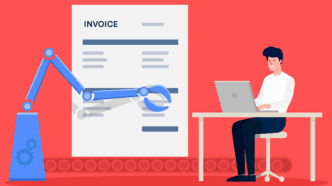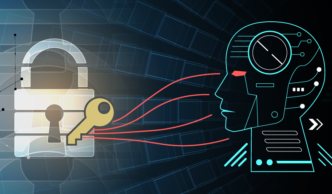For years, Optical Character Recognition (OCR) was the go-to tool for digitizing documents. It turned scanned pages into searchable text and helped businesses automate tedious data entry. But as business operations grow more complex, OCR is showing its age. It often falters when dealing with handwritten notes, messy layouts, or documents that rely on context. In sectors like healthcare, finance, and logistics—where precision is non-negotiable—OCR’s shortcomings are hard to ignore.
Enter Agentic Document Extraction—a smarter, AI-powered approach that’s quickly redefining how businesses handle documents. With accuracy rates soaring beyond 95% and processing times dropping from hours to minutes, this new technology doesn’t just read text—it understands it.
Why Traditional OCR Is Falling Short
OCR brought a revolution in its time. It made data entry faster, helped digitize paper trails, and powered countless workflow tools. But it wasn’t built for today’s unstructured, fast-moving digital environments. Its biggest flaw? Context blindness.
Take healthcare. OCR systems often misread handwritten prescriptions, risking patient safety. Agentic Document Extraction can accurately interpret those scribbles, seamlessly feeding the data into health records.
In finance, OCR might capture line items from an invoice but miss how they relate to the corresponding purchase order. That disconnect can lead to errors—or worse, fraud. Agentic systems, by contrast, read between the lines. They understand document relationships and can even flag mismatches automatically.
Legal workflows are another pain point. OCR can’t grasp legal nuance or detect annotations buried in dense documents. Lawyers still need to step in. Agentic Document Extraction lifts that burden, accurately interpreting legal terms and preserving document structure with minimal manual review.
What Makes Agentic Document Extraction So Powerful
The secret lies in AI—specifically machine learning, visual grounding, and natural language processing. Agentic Document Extraction does more than lift text from a page. It recognizes tables, understands page layouts, and captures context.
In retail, for example, e-commerce companies use it to pull product names, prices, and specs from catalogs with wildly different formats—without manual setup. In logistics, it pinpoints invoice numbers and shipping addresses, highlighting their position on the page for better tracking and accuracy.
And while OCR systems often break when faced with a new layout, agentic systems learn and adapt. In insurance, where claim forms vary between carriers, this adaptability means less downtime and more scalability.
The AI Stack Behind the Revolution
Agentic Document Extraction integrates a robust tech stack. Deep learning models like ResNet-50 and EfficientNet identify document features. Transformers like LayoutLM and DocFormer combine text, image, and layout understanding.
Few-shot learning gives the system flexibility—it only needs a handful of examples to adapt to new formats. NLP tools like BERT help identify key data points such as invoice totals or medical codes, even in fuzzy or ambiguous text.
This isn’t just smart reading—it’s spatial understanding. With computer vision tools like OpenCV and Mask R-CNN, the system can detect columns, forms, and flowcharts. Graph Neural Networks (GNNs) map how data points are connected spatially, ensuring total values are tied to the correct line items.
Most importantly, extracted data retains its original coordinates—providing transparency and full traceability for audits or compliance checks.
How Businesses Are Automating End-to-End Workflows
From ingestion to integration, the pipeline is seamless. Documents arrive via API, email, or cloud platforms like AWS S3. Microservices powered by Kubernetes orchestrate OCR, NLP, and validation modules in parallel.
Rules-based and machine learning validations ensure data is accurate. Then, the structured output is pushed to ERPs like SAP or databases like PostgreSQL. The result? Actionable, real-time data ready for business use.
Where Agentic Document Extraction Shines Most
Across industries, the advantages are hard to ignore:
- Healthcare: Processes complex handwritten records with up to 70% fewer errors
- Banking: Detects fraud by understanding patterns and anomalies in statements
- Retail: Automates invoice validation with touchless accuracy
- E-commerce: Scales with changing product data across platforms
- Logistics: Speeds up customs and shipping document processing
Challenges to Keep in Mind
No system is perfect. Poor-quality scans—faded ink, smudged writing—still pose a challenge. But pre-processing tools like OpenCV and Tesseract can clean up these images for better results.
Cost is another factor. While initial investments may seem steep, most businesses see a return within 6 to 12 months thanks to time savings and fewer errors. And as more solutions go cloud-native, pricing becomes more flexible and accessible for small and medium-sized companies.
What’s Next for Agentic Document Automation?
The future is bright—and fast-moving. Predictive extraction is on the rise. Imagine your system pre-emptively pulling key data from recurring documents or auto-filling CRM fields with context-rich summaries using generative AI.
For businesses considering adoption, look for tools that offer custom validation rules, traceable audit logs, and seamless integration. These features are key to unlocking full automation and compliance at scale.
Conclusion
Agentic Document Extraction isn’t just an upgrade to OCR—it’s a full-blown transformation. By bringing context, flexibility, and intelligence into the picture, it’s redefining how businesses handle document-heavy workflows. The result? Faster operations, smarter decisions, and a competitive edge in today’s data-driven world.













